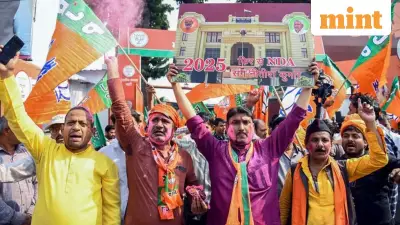
In a significant legal development, high courts across India are emerging as the primary safeguard for unmarried couples in live-in relationships who face threats and harassment from their families. Recent court decisions have reinforced the state's obligation to protect such couples, regardless of their marital status.
Constitutional Rights vs Societal Norms
Advocate Utkarsh Singh, who specializes in representing such couples, highlights the fundamental challenge in these cases. The biggest legal hurdle involves convincing courts that these individuals are citizens exercising their constitutional rights, rather than people going against societal values or family ethos.
"They should not be seen with the view that they are going against society or they are going against family values or ethos," Singh explains. "They are individuals with individual rights given by the constitution, and that is what is to be seen."
Groundbreaking Court Decisions
The legal landscape for live-in couples received a significant boost recently when the Punjab and Haryana High Court granted protection to an unmarried couple in a live-in relationship who claimed they were being threatened by family members. The court explicitly ruled that the "state is obligated to protect the life and liberty of such couples even if they are not married but are in a live-in relationship."
This decision reflects a growing trend where major unmarried couples in live-in relationships are approaching courts fearing violence, harassment, or coercion from their families. The phenomenon is particularly common among couples from different faiths or those who have run away from home fearing physical harm.
Legal Framework and Protection Mechanisms
The landmark Shakti Vahini v. Union of India judgment serves as the cornerstone for protecting such couples. This comprehensive judgment includes remedial measures, punitive measures, and supportive measures to ensure couples' safety and well-being.
"One of the punitive measures is that if a couple approaches a police station and there is no action on the part of the police station, then by virtue of this judgement, action can be taken against the police officers or maybe the khap panchayat or the individuals who are against the live-in relationship," Singh elaborates.
Choosing the Right Legal Forum
According to legal experts, the choice of legal forum depends significantly on the couple's intentions. High courts become the best possible forum when couples intend to marry and seek protection against societal pressure. However, the Shakti Vahini judgment has also created special cells in every district to protect couples' well-being.
"The forum has now, by the virtue of this judgement, shifted from the high court to the special cell, which has to be headed either by the DCP or a senior level officer," Singh notes, highlighting the expanded legal options available to vulnerable couples.
Expanding Protection to LGBTQ+ Couples
In a groundbreaking expansion of protection, the legal framework has been successfully applied to transgender couples seeking safety. Singh represented one of the first transgender couples to receive protection under the Shakti Vahini judgment, overcoming initial state objections that LGBTQ+ couples couldn't be covered under this legal framework.
Justice Mukta Gupta of the Delhi High Court ruled in favor of granting protection to the transgender couple, transferring them to a safe house and establishing an important legal precedent for expanding relationship protections beyond traditional boundaries.
While courts remain a crucial recourse, states like Punjab and Haryana are establishing safe houses in every district, providing couples with alternative protection options before approaching courts. This evolving legal landscape continues to shape how India protects individual rights in relationships against societal pressures and family opposition.





